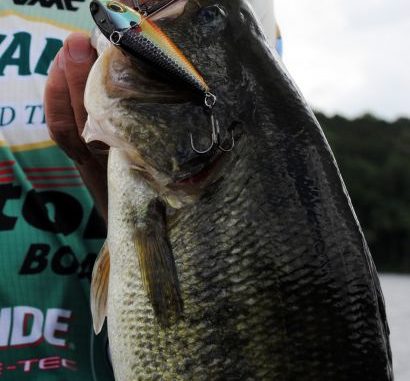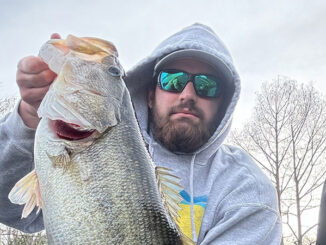
Tight-wobbling lures mimic baitfish bass crush this month
Lipless baits and crankbaits like the Shad Rap have been favorite early spring baits among bass fishermen for years because they consistently produce fish.
But why? What in the design of these plugs makes big bass thrash the waters trying to swallow one? According to bass pro Marty Stone of Fayetteville, N.C., it’s because they act just like baitfish do this time of year.
“Rat-L-Traps and other lipless crankbaits, and tight-wobbling crankbaits like Shad Raps and (Rapala) DT-6s catch fish, and the reason is simple — that’s the way a baitfish swims when it’s cold,” said Stone, co-host of the Outdoor Channel’s Major League Fishing TV show.
Stone, who qualified for four Bassmaster Classics and four FLW Tour championships in a professional career that spanned 15 years, said a fisherman who can use lures that mimic the size of a baitfish, and the speed and manner in which it swims can find themselves hooked up with plenty of March largemouth bass.
“A big misconception in the early spring is that bass don’t actively feed, but they do — just over shorter periods of time and with greater proficiency,” Stone said. “When a bass explodes on a baitfish, he expects that baitfish to have a very tight wiggle because that’s how a baitfish swims when it’s cold.
“The bait is not swimming fast with a big, wide motion.”
Stone usually sets the 50-degree mark as the dividing line for how fast he fishes baits. Before the surface temperature reaches 50 degrees, he’s going slow. Above 50, he might speed things up a little, but not much.
He’s also going to be looking in the backs of creeks for flats that are holding bait and bass — perfect places to fish a lipless bait or a crankbait with a tight wobble.
“The bass will get back in those places the minute the baitfish do, even if the water temperature is still in the 40s” said Stone, who was runner-up as Angler of the Year on the FLW Tour in 1997 and the Bassmaster Elite Series in 2005. “I won a tournament one time: When I put the boat in, it was 46 degrees, and I caught them on flats in the backs of creeks.
“The key is matching the bait size — is it a ¼- or ½-ounce lipless bait? — and the method of retrieve. If it’s under 50 degrees, you crawl it across the bottom, popping it a little when it hits a limb or a branch.”
Stone said he’ll fish crankbaits with tight wobbles around riprap or secondary points with rock. He can slow or speed up his retrieve depending on the water temperature, but one thing that won’t change is how these baits react when they hit something.
“If you’re fishing a crankbait with a wide wobble, you hit something and it’s going to bounce hard to the right or left; it will be very evasive,” he said. “You hit something in 50-degree water with a Shad Rap or lipless crankbait, and when it hits they’ll turn over on their side, which mimics a dying shad as well as anything any of us have in our tackle boxes.
“A dying shad will roll over on its side, and it will sink to the bottom; then it will try to swim some more, and a bass can’t stand it.”


